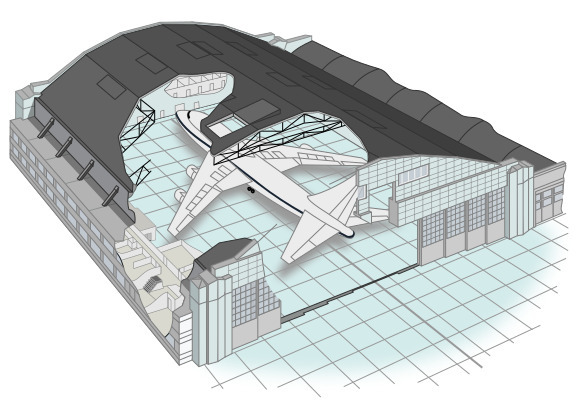How were the hangars born?
To answer this question, it’s interesting to start with the etymology of the term ‘hangar’.
It’s very likely that the word came from the Frankish haimgard, which means ‘enclosure annexed to the house’.
Do you remember the aviation pioneer Louis Blériot.
Well, during a competition to fly over the English Channel, Blériot had to perform an emergency landing near a farm in Northern France.
While looking for a shelter for his broken monoplane, the aviator used the adjacent shed where he was able to fix the damage and leave within a few days.
Main functions of a hangar

Hangars are used to protect airplanes from bad weather and the sun as well as to perform maintenance work, repairs, assembly and for storage purposes.
In a nutshell, hangars are the garages and repair shops of airplanes.
Built from steel and concrete, these large structures are designed to house airplanes (as many as 50 or 60 of them!) as well as replacement engines, fuel tanks and heavy equipment.
A hangar is comprised of four areas divided by sliding doors (a safety precaution to avoid fires) and is covered by a curved roof for stability reasons.
Since airports are often located in areas without natural or artificial barriers to protect them from the wind, buildings with flat roofs would be more vulnerable.
Not just airplanes…
In the first half of the twentieth century, hangars played a fundamental role in the management of airships, which are far more delicate than airplanes.
Today, the biggest hangars in the world accommodate space vehicles, especially shuttles.
Unlike ‘our’ hangars, these buildings are very tall due to the typical elongated shape of spacecraft.
For example, the Vehicle Assembly Building is a hangar at the NASA Kennedy Space Center designed to house the construction of large spacecraft such as the Saturn V and the Space Shuttle.
Measuring 3,664,883 cubic meters, it is one of the biggest hangars in the world and it is the tallest suburban building in the USA today.




